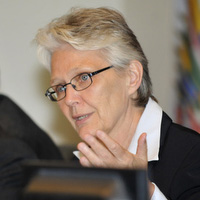 The world has come a long way since 227,000 people from over 50 countries lost their lives in the Indian Ocean tsunami on December 26, 2004.
The world has come a long way since 227,000 people from over 50 countries lost their lives in the Indian Ocean tsunami on December 26, 2004.  The world has come a long way since 227,000 people from over 50 countries lost their lives in the Indian Ocean tsunami on December 26, 2004.
The world has come a long way since 227,000 people from over 50 countries lost their lives in the Indian Ocean tsunami on December 26, 2004.
Many of those lives would have been saved if we had in place the Indian Ocean Tsunami Warning System which now provides alerts through three regional watch centres in India, Indonesia and Australia, and a network of 26 national tsunami information centres. It is an efficient system which disseminated early warnings within eight minutes of the Banda Aceh earthquake in 2012.
The tsunami’s greatest legacy though resides in the attention it drew to the issue of exposure to disaster risk in a way that no World Conference on Disaster Risk Reduction could hope to achieve on its own.
By coincidence, such a world conference did take place a few weeks after the Indian Ocean tsunami. Interest spiked dramatically and 168 governments came to Kobe – the scene of an earthquake which killed thousands in 1995 – in Hyogo Prefecture, Japan, to adopt the world’s first comprehensive agreement on the actions required to reduce loss of life and economic losses from disasters.
Hundreds of journalists also attended, propelled by the outpouring of grief and the huge fundraising response to what has been described as the world’s first global disaster. One unusual feature of that response was that it actually exceeded the estimated economic losses inflicted by the tsunami.
The Indian Ocean Tsunami launched a decade of unprecedented effort to spread a culture of disaster risk management across the globe based on the priorities outlined in the Hyogo Framework for Action (2005-2015) – Building the Resilience of Nations and Communities to Disasters (HFA) which was the outcome document of that world conference.
These last ten years have been punctuated by some of the worst disaster events in living memory, the destruction of Port-au-Prince with the loss of over 200,000 lives, drought on the Horn of Africa, devastating earthquakes in China and Pakistan, Cyclone Nargis in Myanmar, Hurricane Katrina in the USA, the Great East Japan Earthquake and Tsunami, Superstorm Sandy, wildfires in Russia and floods in northern Thailand, to mention some.
All point to the scale of the challenge that lies ahead as we grapple with a world where hazard is often the mother of innovation but all too often after a major disaster event has ruthlessly exposed some underlying vulnerability which had been either ignored or poorly understood.
Nonetheless, a review of the last decade shows that mortality from weather-related disasters can be reduced significantly, is on the decline, and there has even been a significant drop in the numbers of people directly affected by disasters in Asia and Europe.
In years past, storms such as Typhoon Hagupit which hit the Philippines in early December, or Cyclone Hudhud which hit India in November, would have claimed many thousands of lives. Thanks to a combination of better organization and coordination, improved weather forecasting, early warnings, public education, media engagement, better response and preparedness, there has been a reduction in the numbers of people dying in such disaster events.
That’s the good news. But risk and opportunity are two sides of the same coin. Economic development and population growth are driving up our exposure to risk at an unprecedented rate and this is reflected in the escalation of economic losses this century, calculated by the UN Office for Disaster Risk Reduction to be in the region of $2 trillion.
As negotiations continue on a revised HFA which will be adopted at the Third UN World Conference on Disaster Risk Reduction, in Sendai, Japan, in March 2015 www.wcdrr.org, it is clear that reducing loss of life will remain a key priority. However, there needs to be a dramatic scaling up of efforts to tackle economic losses resulting from vanished jobs and homes, and damage to critical infrastructure such as schools and hospitals, public transport, energy supply and telecommunications.
If planning laws and building codes are to be respected, there is a need to continue the strengthening of governance and institutions to manage disaster risk. If these don’t work, then there is a reduced chance of making progress against drivers of risk such as poverty, uncontrolled urbanization, environmental degradation and climate change.
The world has built up an inspiring catalogue of practical ways to reduce disaster risk such as Turkey’s drive to make all schools earthquake-proof by 2017, or China’s success in keeping direct economic losses from disasters to within a target of 1.5% of GDP for the last three years.
This holiday season we are remembering those who died in this tragic event but we should also recognize that their deaths have not been in vain and have contributed to making the world a safer and more resilient place.
Margareta Wahlström was the UN Special Coordinator for Humanitarian Assistance to the Tsunami-Affected Countries (2004-2005) and is currently the Head of the UN Office for Disaster Risk Reduction.